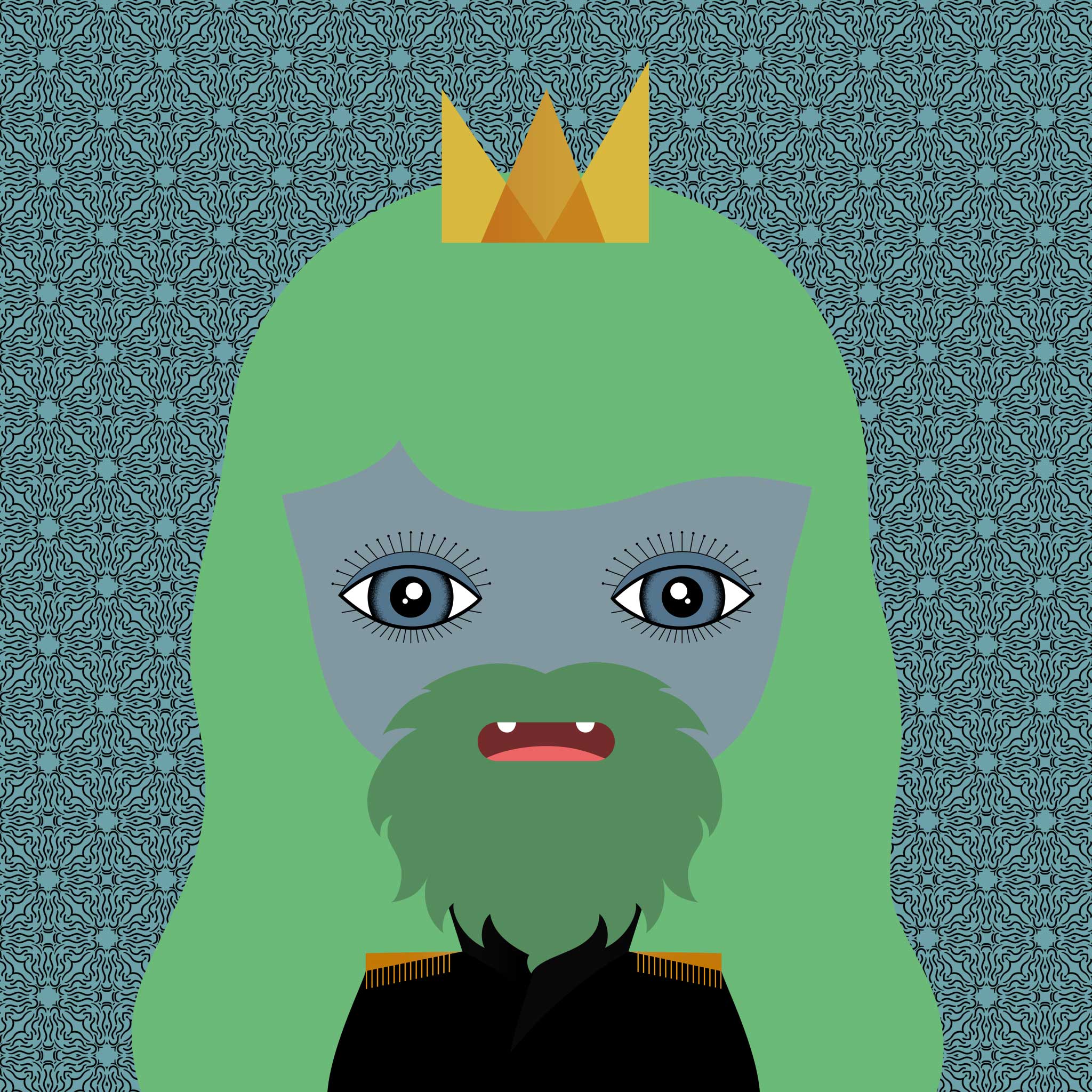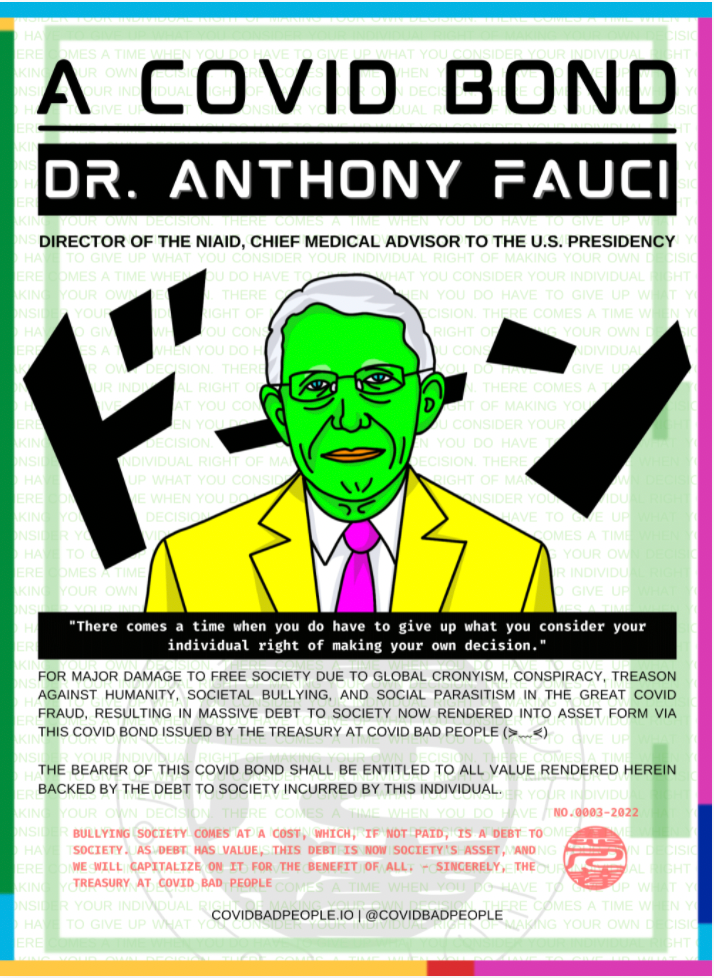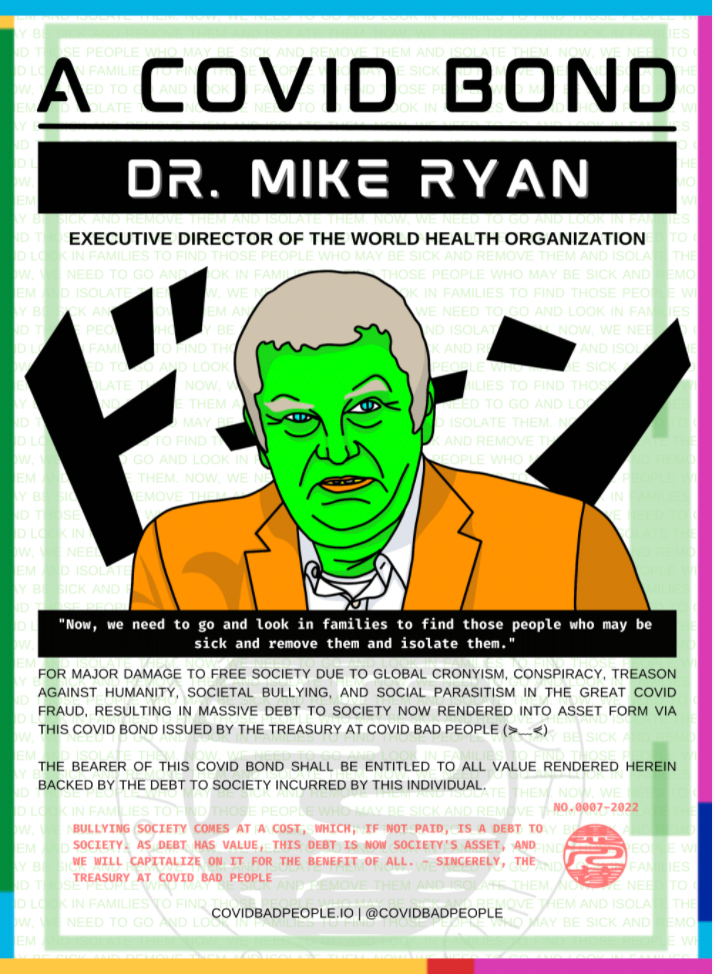The artist discusses her collaboration with NARS Cosmetics and the power of beauty and identity.

Do electric memes dream of JPEGS?: an interview with Moxarra Gonzalez
“GM JPEGS” by @moxarrarare (2021)

Moxarra Gonzalez by Dave Krugman
What counts as art? It’s a question with no definitive answer that artists and theorists have wrestled with for centuries, yet somehow, the artistic establishment still claims to know the truth. Distinctions between art and not art, high art and low art, the valuable and the worthless, often reflect the tastes of the ruling class. Over time, as more and more artists embrace styles and subjects that the traditional artworld refuses to engage with, those styles and practices assimilate into the mainstream. Then, once something becomes too popular for the elite to ignore, the cultural canon appropriates it.
“This isn’t art,” is an accusation frequently leveled at crypto artists. And while there is a great variety of art minted as NFTs, from digitally rendered oil paintings to fine photography, Web3 has seen its share of distinct styles and movements completely unique to the digital space (some even predating Web3), from trash art to vaporwave to work that utilizes blockchain itself as part of the medium. Unsurprisingly, some of the most emblematic pieces of crypto art have traditional collectors rolling their eyes, especially those that incorporate memes or reflect the tastes of artists who’ve spent their lives online. Are memes art? Establishment art types might scoff at the idea, but I think a case is easy to make. Writing for Polygon back in 2018, Sam Greszes asserted that “Shitposting is an art, if history is any indication.” Even prior to this, I’ve heard underground artists, friends, acquaintances, myself even, voice the same take since at least 2013: memes are Dada1. Greszes makes astute comparisons, for example likening memes that rely on found imagery to Duchamp’s readymade art. The argument for the inclusion of memes and internet culture in artistic spaces is as old as internet culture itself. But most such artists are still, by all accounts, artworld outsiders.

Moxarra Gonzalez by Oveck
Mexican artist Moxarra Gonzalez studied art at The Autonomous University of Nuevo León in Monterrey, but his introduction to digital art didn’t come until he worked at a newspaper in his hometown, creating infographics and illustrations with rapid turnaround times. Through a Facebook ad in 2015, he found Dada.nyc, the now-emblematic collaborative platform where users communicate via digital drawings made in a simple interface. He quickly became involved in the community. Moxarra’s move into NFTs arrived when the platform began monetizing its digital artwork through the “Creeps and Weirdos” collection, and today he’s regarded as a crypto art OG, with work minted on SuperRare2 , MakersPlace, KnownOrgin, Foundation, and other platforms. “I come from skate MTV culture,” he told me when I spoke to him over a video call. He lit a cigarette as he settled in to speak to me. I noticed he looked like he should’ve had a lanky frame, but in fact appeared rather sturdy. His black tee, glasses, and ponytail wouldn’t be out of place at the Bushwick skate bar I head to for a beer after work when decide I need to doomscroll on a weeknight. “I like to draw a lot…I like music. I like punk. So I think that’s reflected in my work.” And those influences truly are unmistakable–much of his art references the aesthetics and touchstones of the 1980s, but uses that framework to address events of the present, be it global news, the crypto scene, or internet culture. The result is frequently anachronistic, retrofuturist, and fantastically sure of itself.
Moxarra’s roots in punk and skate culture are evident in series like Non Fungible Tokens–ten cards stylized like Garbage Pail Kids that reference different aspects of the NFT space–and Surprise PFPoops, his take on PFPs. It’s the type of art that reminds me of when Heinz sold green and purple ketchup that my mom wouldn’t buy, no matter how much my brother and I begged3. But that’s the point. To be a little cheeky and juvenile, even gross. Nothing is so serious that there isn’t room for a swirly green piece of shit wearing weed glasses with a tab of acid on its tongue. Or even better, a joint hanging from the corner of the mouth of Hielos, specifically the bust of Hielos that’s become so familiar to fans of vaporwave via the cover of Floral Shoppe by Macintosh Plus. Plenty of Moxarra’s pieces have a vaporwave sensibility to them–even if they aren’t quite so overt as “Vapor Dave”–particularly in his GM series, which utilizes bright neon colors, bold lines, and flashing gifs. Characters featured in these works are mostly (but not always) pulled from 1980s pop culture, and if they’re not, they occupy the same visual niche. Moxarra told me that he usually draws a GM everyday, and likened the practice to when he needed to turn art around quickly for newspaper deadlines.

“GM Assholes” by @moxarrarare (2021)
And Moxarra isn’t afraid to comment on the crypto scene, both in regard to insiders and outsiders. In “NFTEvil,” he addresses artists who hate NFTs using the format of the Old Man Yells at Cloud meme (memes really do make for effective communication in the arts), and in “HODL Please” he similarly uses the format of a meme, this time the Everything’s Fine dog, to poke fun at crypto evangelists who place a little too much faith in the coin.
When we spoke, I asked Moxarra about the NFT space, and what he wanted to see change. He thinks that too many people are trying too hard to be seen. “All these little groups that have been like…they really want to identify with something. So that’s weird because when we started, we were anonymous. Most of the people thought that Moxarra was a girl.” In many ways, part of the point of crypto is anonymity—there’s a reason your public wallet address is a string of characters in lieu of your first and last name. Even when crypto artists have public facing identities, they frequently go by their social handles or nicknames (Moxarra is a nickname, after all). Some OGs do share their real names, and certainly some can be vocal. But on the whole, they’re still quieter than newcomers.

La Lagunilla Market by Dave Krugman
“They start in this world and they want to be famous like Picasso or, I don’t know Modigliani, or they look at the old school days of art, either the big people in crypto art like, I don’t know, XCOPY.” For Moxarra, it doesn’t matter who someone is, where they’re from, or what groups they belong to. The most important thing is the art and how he can connect to it. “Be anonymous, I think,” he said, in regards to crypto artists. He acknowledges his thoughts on the matter could be colored by the fact that when he first entered the space, no one knew who he was. No one knew who anyone was. “We didn’t really care if we got famous. I don’t really give a fuck if someone knows me or recognizes me on the street.” We discussed the positives and the negatives of the crypto art scene going mainstream; on one hand it brings legitimacy to the art and the artists; on the other hand, as when anything goes mainstream, it gets diluted into an afterimage of its former self, taken over by people who don’t understand what it meant in the first place. “Well, maybe the NFT scene will get established in a moment because we are seeing all these Christie’s and Sotheby’s auctions with NFTs. So more of the outsiders, they are getting to know NFT culture.” He paused for a moment, then continued. “But as we started this stuff, I don’t want to be mainstream now. I hope it goes mainstream, but I don’t want to be mainstream, you know?” The perspective was very punk of him, I thought.

“SOMNUS” by @moxarrarare (2021)

Oliver Scialdone is a queer writer and artist based in Brooklyn, NY. They earned a dual-MFA from The New School, and their work can be found in Peach Mag, ImageOut Write, and elsewhere. They used to host the reading series Satellite Lit and they're the Associate Editor at SuperRare Magazine.
Tech






Code as canvas: how Olta and Transient Labs are ushering in a new genre of coding as art
Harmon Leon interviews the minds behind Olta and Transient Labs to discuss code, metadata, and the future of interactive NFTs.
Curators' Choice






Curated Conversations: Ayla El Moussa
SuperRare Labs Curatorial Editor Linda Dounia Rebeiz interviews Ayla El Moussa about how she draws inspiration from the Renaissance period, how she approaches nude portraiture, and her “Painted Muse” Series on SuperRare.


























